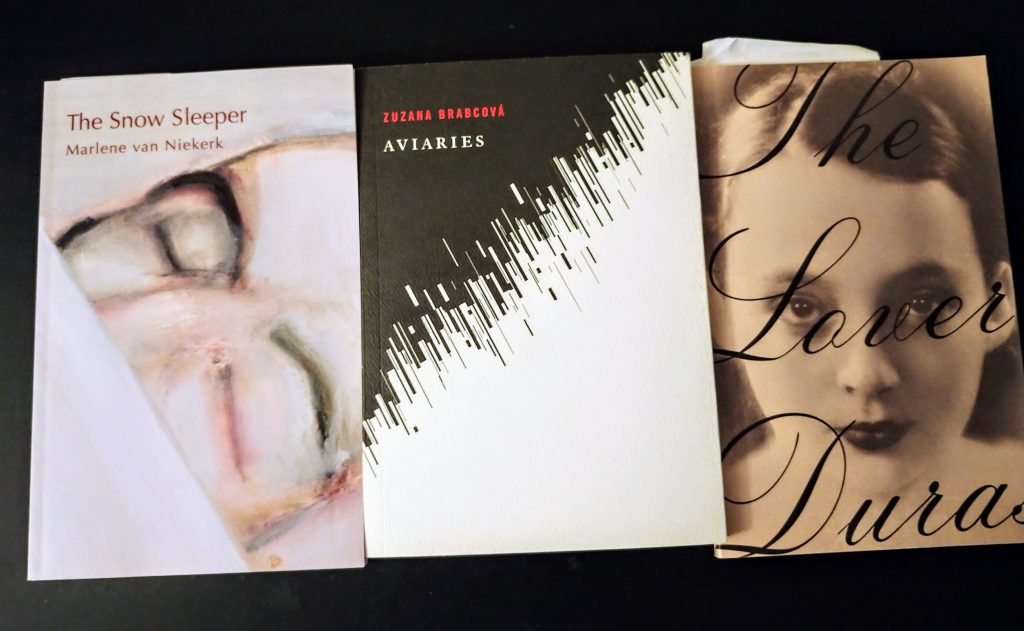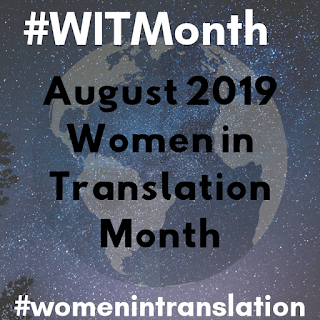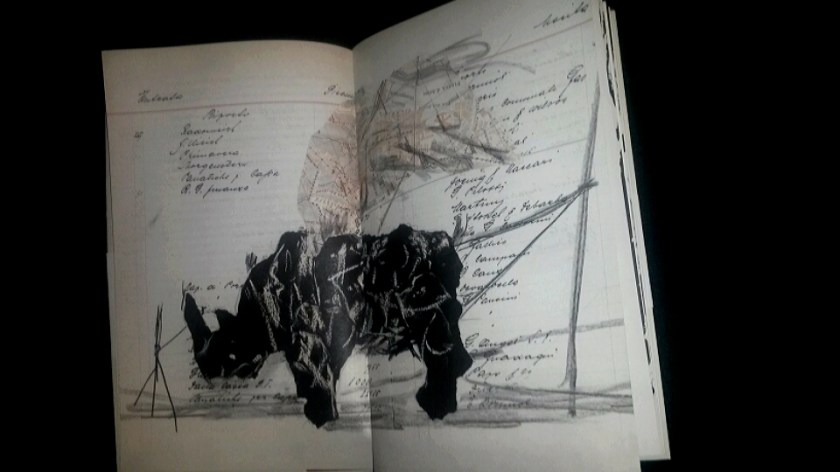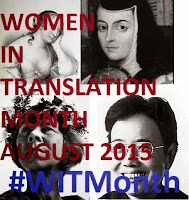Oh, she serenades me so lovingly in the crepuscule of the park, the last lark. Does she really want to fraternise with this fluorescent shade? You are from the social services, Mevrouw? What? Come closer chincherinchee, I’m hard of hearing. You’re from the service that does the annual census of rough sleepers? She looks at me! Oh what an expert gaze rests upon me! Diva of the indolents in the catacombs of Krijtberg, sleep-counter of the stone-broke in the Heiligeweg!
At the end of July I shared a few thoughts about translation, arguing that a translated text need not be cleansed of all the linguistic flavour of the source language, especially slang, vernacular or wordplay woven into the original narrative. It may not always be possible or desirable to maintain certain elements, and sometimes transferring the rhythm and feel of an idiosyncratic expression may require the creation of a new word or the unconventional use of English, but it’s a balancing act. Strip away too much and, unbeknownst to the reader, the smooth sounding rendition they hold in their hands may have come at the cost of much of the energy and charm of the original. It might arrive prechewed, if you like, as if to make it more digestible. And unless you know the source material and language, who’s the wiser?
 With Marlene van Niekerk’s The Snow Sleeper, you will have no doubt that you are dipping into the slippery terrain between languages. Originally published in Afrikaans, and translated into Dutch and English, it almost feels as if more than one language is meant to interact on the page at times. As a collection of four longer short stories—two set in Amsterdam, and two in South Africa but with a significant connection to the Dutch capital—there is room for a little playful linguistic overlap. And English language translator Marius Swart is quite comfortable allowing that to happen, when appropriate.
With Marlene van Niekerk’s The Snow Sleeper, you will have no doubt that you are dipping into the slippery terrain between languages. Originally published in Afrikaans, and translated into Dutch and English, it almost feels as if more than one language is meant to interact on the page at times. As a collection of four longer short stories—two set in Amsterdam, and two in South Africa but with a significant connection to the Dutch capital—there is room for a little playful linguistic overlap. And English language translator Marius Swart is quite comfortable allowing that to happen, when appropriate.
Of course, this approach is entirely in keeping with the text at hand. This set of loosely intertwined tales is concerned with storytelling—with language, translation, sound, and images. With what can be told and what cannot. With what should be said—that is, the storyteller’s social obligation—and what should not. And with how to open oneself up to what is being shared.
The opening story “The Swan Whisperer” will be familiar to anyone who chanced to read it in a slightly different form in The Cahier Series edition which featured the striking images of William Kentridge. Rereading it again I was as captivated as ever. Presented in the form of a lecture by a South African teacher of Creative Writing who shares the author’s name; it is an account of Kasper, a misfit student who unexpectedly sends her a long missive from Amsterdam where she had secured him a writing bursary. He is in the hospital, but wishes to explain why he is dropping out of his degree, and recount the most unusual and transformative occurrences which he has experienced. She is not impressed. No, she is even a bit angered. Reads a little and tucks his letter away. When a second package arrives, this one filled with cassette tapes and a so-called Log Book of a Swan Whisperer, she retrieves the letter, reads further and learns about her student’s infatuation with a drifter who appears to be able to communicate with swans. Reluctantly she finds herself drawn into the strange and compelling mystery her former student represents, and caught up in the project captured on his tapes—one where translation leads beyond the structure of ordinary language, grammar and meaning.
The second tale, set in Amsterdam, takes the form of a lengthy, rambling eulogy for Willem, a writer of some renown. Jacob, his best and perhaps only friend, is a clockmaker who sets out to describe the last day of Willem’s life, one they spent together. The writer had been seeking feedback on his latest story, “The Percussionist,” and now Jacob has brought the unfinished manuscript along. It forms the unlikely backbone to his address to the gathered mourners. He reads from it, imploring the restless assemblage to help him complete the tale. As with all of Willem’s stories it was inspired by someone he had become fixated on and studied through his binoculars:
I would always know when he was having a crush on someone new, and that he’d write it up as soon as it was over, and that I’d once again be called as his witness. Not to witness the infatuation, but to attest to the fantasy. Because nothing meaningful ever came from these so-called great loves of Willem’s. The stories were all he retained. He held on to them for dear life. They were his real lovers, I only realise this now.
Their final day together ended in a riotous, childlike trashing of Willem’s apartment, as if he somehow sensed it was his last, but his friend, left to gather up all the pieces is the one who now has nothing to hold on to. Even as much as he resists it, the funeral also has to come to end and he must go home in his aloneness.
The title story “The Snow Sleeper” is the point at which the threads that tie the stories together intersect, though, the way they actually connect, or the extent to which the narratives and characters can be trusted, is not entirely certain. Here Willem’s younger sister Mevrouw, with both her father and her brother dead, is engaged in a study of Amsterdam’s homeless for her thesis. She finds herself under the spell of a “radiant vagrant,” an enigmatic and articulate jester holding court on a bench in a city park. Unfolding as a series of transcriptions from her interview with him, interspersed with memos that record her reaction to her curious subject along with memories of her own father who had similarly wandered in his later years, lost and restless until he was contained in a nursing home. She is, in guilt and grief, vulnerable to the strange charm of an eccentric drifter determined to tell her a story about a snow sleeper while she is intent on recording responses to the questions on her questionnaire.
Where I’m from, that’s what you want to know Mevrouw? Don’t they teach the art of the diplomatic approach any more, there in your lieweherehogerschool? “Where” is a vagrant “from”, did you hear that, dear listeners? Where from!
Fromness is for someone with a bed in one place, dear lady, but I sleep outside, I come from a cucumber and blow where I will, I know all the spots, the summer houses and the short stays, this park bench is my Xanadu, but I’m actually a man of snow, I drink my own thirst, with a horseradish for a nose and three chestnut buttons on my stomach, a cruel infestations of imaginings in my breast.
Among the tales he spins for his interviewer, is one of a doleful young man whom he tricked into believing he had the power to call swans, and a photographer for whom he performs the construction of a winter bed of cardboard and plastic. He has been, he implies, the ultimate jack of all trades—reciting poetry for a few coins in the park, seducing the lonely souls out of their own security and onto the streets. And for Mevrouw? He haunts and disturbs her thoughts as they share that park bench and day fades to evening:
If you’re going to split your fire for me, I wanted to tell the drifter, if that’s what your story is about, about how you consume people by whom you feel threatened, then I will burn like the wood of a plum tree, you will see all your language burn, soaked into my fibres, you will hear the echo of your impossible tale, a suitcase full of popping coals.
The interview ends when her tapes run out, but she is altered. Not even certain how. His stories nested within her own memos is a searching for answers.
The closing story, “The Friend,” returns to South Africa. The narrator is again named van Niekerk, caustic like the first one, but different in nature. She tells of a friend from school to whom she was unnecessarily cool when she was a young politically engaged activist and he was an awkward character with a stutter and an interest in photography. She encourages him to turn his lens to the injustices of the day at their country’s critical turning point. And he does, becoming a famous documentarian—then going a step too far. Does he perchance end up in Amsterdam one winter? Paths cross, but this is a softly tragic tale about a different kind of storytelling. One with images instead of words. One that ends, like the first, beyond words altogether.
Marlene van Niekerk, known for large novels like Triomf and the monumental Agaat, is equally mesmerizing in a smaller format. The stories in this collection are dense with emotion, ideas, and textual cross references, yet each one feels like magic—sad and wonderful at once.
The Snow Sleeper by Marlene van Niekerk is translated by Marius Swart and published by Human & Rousseau. It is my final Women in Translation Month read for 2019.


















